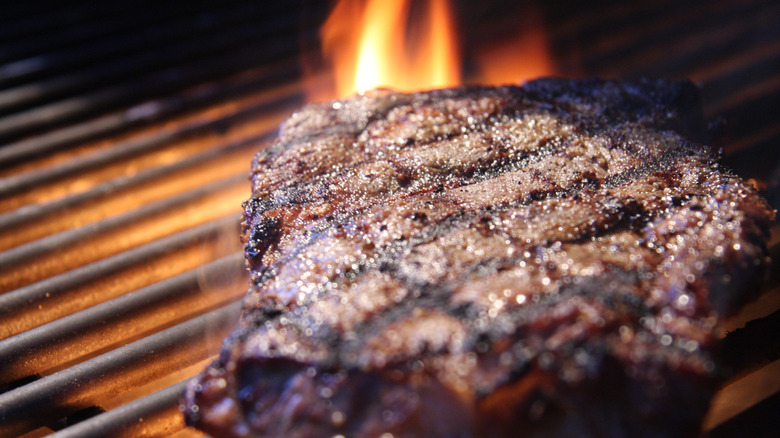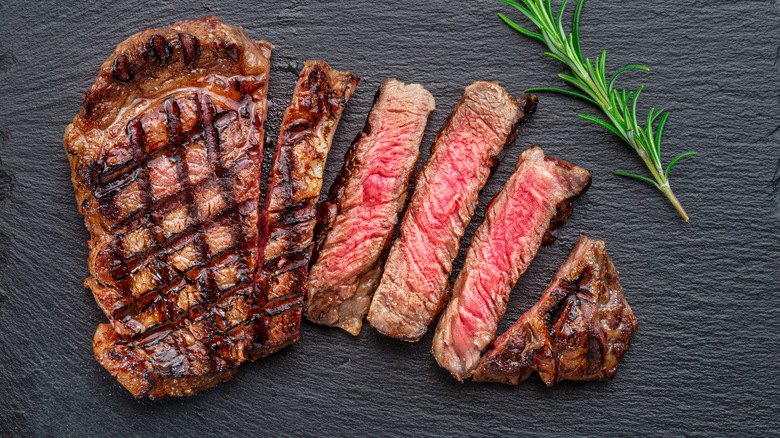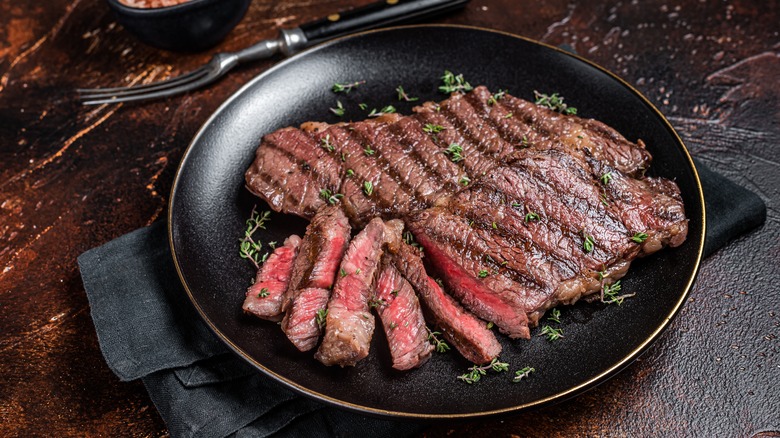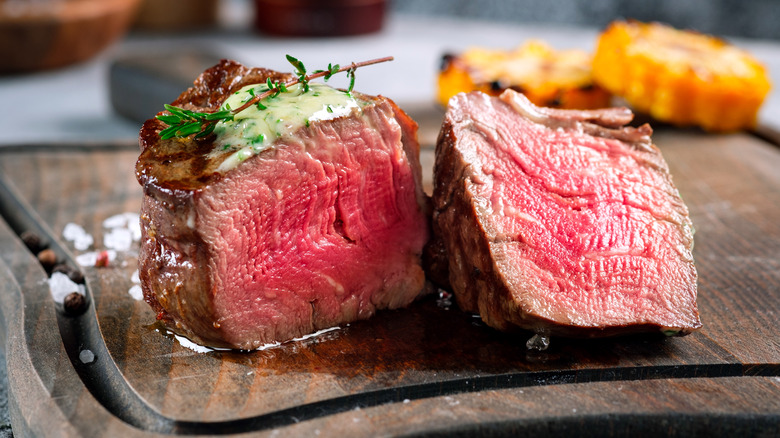3 Steak Cuts You Should Never Be Marinating
Marinating steaks is a common step in many recipes, but it does test one's patience. Marinating takes at least a couple of hours and adds a lot of prep work to an otherwise simple piece of meat. Fortunately, it isn't always necessary. Marinades can bring tenderness, juiciness, and new levels of flavor to a steak, but sometimes, you don't actually need those things. Sometimes, a steak is tender, juicy, and flavorful enough all on its own.
You should only be marinating steaks if you're using a cut that is tough or lacking in flavor. Marinades are great for lean cuts of steak, where the absence of fat might leave them tough and dry when cooked. That's why you should marinate tri-tip, flank steak, chuck, and similar cuts, which fall in the lean category.
On the other hand, there are cuts with tender muscle fibers and generous marbling of intramuscular fat that make tenderization unnecessary. In fact, using a marinade can detract from the rich flavors of certain steak cuts. This is particularly true of three cuts that are widely considered among the most desirable steaks available: ribeye, strip steak, and filet mignon.
Generous marbling makes ribeye incredibly juicy
Ribeye is arguably the most popular and critically-acclaimed cut of steak on the market. It comes from the cow's ribcage, and if you buy bone-in ribeyes, they will come with a portion of the rib attached. The ribeye is primarily composed of a muscle called the longissimus dorsi, which runs along the cow's back from shoulder to hip. Because this muscle is not involved in the cow's movements, it gets very little exercise, keeping the muscle fibers thin and tender.
Ribeye's most prized trait is its high intramuscular fat content. Ribeyes typically have more marbling than any other cut on the cow, and you can tell a high-quality ribeye steak by the thin specks of white fat flecked throughout the red muscle. This marbling has two delightful effects. Firstly, the fat will melt into the meat as it cooks, making the steak incredibly juicy. Secondly, fat is flavor, and the more marbling a steak has, the richer it will taste.
It's best to let the flavor of a well-marbled ribeye steak shine on its own. A marinade could overshadow the pure beefiness, wasting the most desirable aspect of the cut. Ribeye steaks are among the most expensive cuts of beef, so don't waste them. Plus, the fat makes the meat plenty juicy on its own, no tenderization required.
Strip steaks have a rich flavor on their own
Strip steaks are sold under a few different names, the most common being New York strip. However, depending on where you are, it could be called a Kansas City strip, Omaha strip, or strip loin steak. Strip steaks are also cut from the cow's longissimus dorsi muscle. They come from a section of the muscle located just behind the ribs. Coming from the same primary muscle, the difference between strip steak and ribeye is subtle, with strip steak being slightly less fatty. Nevertheless, both steaks are prized for the same core traits of juicy marbling and rich flavor.
Strip steaks are particularly popular for their rich, beefy flavor. Just as was the case with ribeye steak, using a marinade for this cut could detract from that richness by introducing too many other components. Most strip steaks are sold boneless, but if you want an even more intense flavor, look for a bone-in strip. These are sometimes sold under the names "club steak" or "shell steak," and the inclusion of the bone brings even more flavor and tenderness to the cut.
Filet mignon is the most tender steak
Filet mignon is the most tender cut of steak, and a steady favorite at steakhouses the world over. Its tenderness is particularly notable considering that this is a very lean cut with hardly any marbling in sight. Filet mignon comes from the beef tenderloin, a long muscle located below the cow's backbone. The tenderloin is not heavily involved in the cow's movements and bears very little weight. As a general rule, the less active the muscle, the more tender the meat. Unlike most other lean cuts, filet mignon features very little connective tissue, keeping it exceptionally tender.
The tricky thing about filet mignon is that it has a much milder flavor than most other cuts of beef, although it is also a touch sweeter. A marinade would likely overwhelm the subtle flavor of a filet, so it's better put to use elsewhere. As with ribeye and strip steak, filet mignon is one of the most expensive suits of steak on the market, and if you're going to make that investment, you should appreciate it in its pure form. Save the marinades for more affordable steak cuts.



